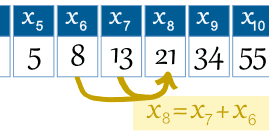Do you know about CUBE ?
Look at the pictures below !
A box, a rubiks, and a dice above are cuboid. Mention other the cuboid objects!
Parts of A Cube
----------------------
4 ) EFGH side
5 ) DCGH side
6 ) BCGF side
So, a cube has six sides.
The edges of ABCD.EFGH CUBE is:
1 ) AB edge
2 ) EF edge
3 ) HG edge
4 ) DC edge
5 ) BC edge
6 ) FG edge
The vertices of ABCD.EFGH CUBE is:
1 ) A vertex
2 ) B vertex
3 ) C vertex
4 ) D vertex
5 ) E vertex
6 ) F vertex
A pattern that you can cut and fold to make a model of a solid shape.A pattern from combination of six square shape cuboid.

A cube is also called a hexahedron because it is a polyhedron that has 6 (hexa- means 6) sides.
Cubes make nice 6-sided dice, because they are regular in shape, and each face is the same size.
In fact, you can make fair dice out of all of the Platonic Solids.
EXERCISE
Look at the pictures below !
A box, a rubiks, and a dice above are cuboid. Mention other the cuboid objects!
Parts of A Cube
----------------------
| Face : | Also called facets or sides. A cube has six faces which are all squares, so each face has four equal sides and all four interior angles are right angles. |
| Edge : | A line segment formed where two edges meet. A cube has 12 edges. Because all faces are squares and congruent to each other, all 12 edges are the same length. |
| Vertex: | A point formed where three edges meet. A cube has 8 vertices |
The sides of ABCD.EFGH CUBE is:
1 ) ABCD side
2 ) ABFE side
3 ) ADHE side4 ) EFGH side
5 ) DCGH side
6 ) BCGF side
So, a cube has six sides.
1 ) AB edge
2 ) EF edge
3 ) HG edge
4 ) DC edge
5 ) BC edge
6 ) FG edge
7 ) EH edge
8 ) AD edge
9 ) AE edge
10) BF edge
11) CG edge
12) DH edge
So, a cube has twelve edges.
8 ) AD edge
9 ) AE edge
10) BF edge
11) CG edge
12) DH edge
So, a cube has twelve edges.
1 ) A vertex
2 ) B vertex
3 ) C vertex
4 ) D vertex
5 ) E vertex
6 ) F vertex
7 ) G vertex
8 ) H vertex
So, a cube has eight vertices.
8 ) H vertex
So, a cube has eight vertices.
Base on the description above, we can describe the definition of cube as follows:
Definition of Cube
--------------------------
A solid with six congruent square faces. A regular hexahedron.
The Net of A Cube
----------------------------
A pattern that you can cut and fold to make a model of a solid shape.A pattern from combination of six square shape cuboid.
This is a net of a cube.
There are eleven nets of a cube.

Volume and Surface Area of A Cube
----------------------------------------------------
To find volume of cube with use this formula:
Volume = (Edge Length)3
To find surface area of cube with use this formula:
Surface Area = 6 × (Edge Length)2
A cube is also called a hexahedron because it is a polyhedron that has 6 (hexa- means 6) sides.
Cubes make nice 6-sided dice, because they are regular in shape, and each face is the same size.
In fact, you can make fair dice out of all of the Platonic Solids.
EXERCISE



















